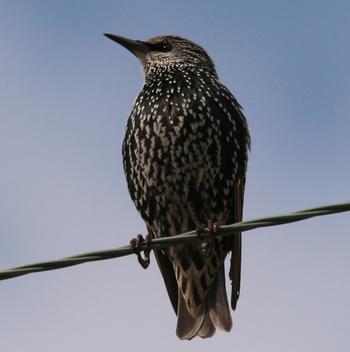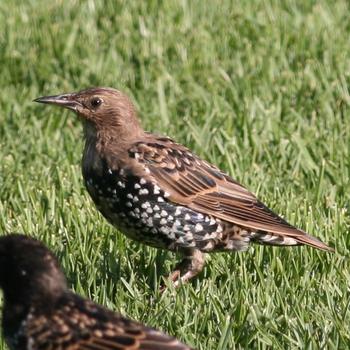European Starling (Sturnus vulgaris)

European Starling, winter - CSU San Bernardino
© Tom Benson

European Starling, immature - CSU San Bernardino
© Tom Benson
The European Starling is a common year-round, breeding resident on campus, mirroring its status in southern California. They can be seen anywhere on campus, and often form large flocks in the fall and winter. It was introduced to New York from Europe in 1890, and quickly spread across the continent reaching California in the 1940s. It is now one of the most common birds in southern California, especially in urban and agricultural settings.
High Count: 300, Average Count: 5-20
In the fall European Starlings can be identified by their black bill, glossy black (and often showing iridescent green and purple) plumage with white spots. By spring the white spots have worn off the tips of the feathers and the birds appear entirely glossy black, but the bill is bright yellow. Juveniles are entirely brown with a black bill, however, they molt into adult plumage by the end of summer.